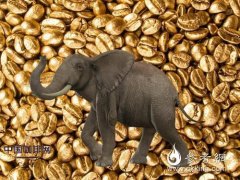Coffee beans travel
The origin of this economic crop is in Yisuobi in Africa. It has been cultivated for more than 2000 years. At present, the main coffee producing areas in the world are Latin America, Africa and Africa. According to statistics, coffee is cultivated in 76 countries in the world, mainly in Africa and the United States. Chinese coffee was first introduced in Taiwan in 1884. In 1908, large-grain and medium-grain varieties of coffee were first introduced to Taiwan in 1908. At present, the main cultivation areas are in Hainan, Shaanxi, Guangxi and Hainan.

The first flowering period of the coffee bar is about three years. The white five-petal tube flowers are scattered with a faint scent of jasmine. The inflorescences are arranged in dense clusters and contain essential oils, which can be used as high-grade spices. Flowers wither after two or three days of blooming and begin to bear fruit in a few months. The fruit is a stone fruit, about 1.5 cm long, it is dark at first, then it is dark when it is ripe, and it is very similar to peach, so it is called peach coffee (Coffee Cherry) and can be harvested at this time.
The coffee fruit contains coffee beans, that is, coffee beans. There are raw beans and cooked beans. What we usually see are coffee beans, that is, beans that are roasted and fried in high fat.
Each raw coffee bean has the outer membrane of a cattail, which is called peel, and its outer coat is covered with a dark-colored outer skin, which is called endocarp. The whole coffee bean is wrapped in a sticky substance to form the pulp of the coffee, which is thick and sweet, and the outermost is exotic.
Climate is the decisive factor in coffee planting, and coffee coffee plants only grow together in the summer or winter, so it is most suitable to grow coffee in areas between the north and south of 25 degrees. This coffee producing place is generally referred to as "coffee shop" or "coffee area".
However, not all the land located in this area can produce good coffee shops. The ideal planting conditions for coffee bars are warm temperatures between 15 and 25 ℃, and the annual rainfall must reach 1500 to 2000 millimeters. At the same time, the rainfall should be in line with the blooming season of the coffee shop. Of course, in addition to the combination of seasonal seasons and rainfall, there should also be fertile soil. The most suitable soil for growing coffee is a well-drained, fertile soil containing pozzolanic ash.
In addition, daylight is of course an indispensable element for the growth and fruit of coffee, but strong sunlight will affect the growth of coffee coffee, so various producing areas usually cooperate with the planting of some shade plants, such as bananas, mangoes and legumes. The ideal altitude is 500-2000 meters. Therefore, the best coffee products are grown at an altitude of 8-1200 meters above sea level. It can be seen that the conditions of growing high-quality coffee, such as light, rainfall, soil, grain, as well as the way coffee beans are harvested and the production process, will affect the quality of the coffee itself.
Important Notice :
前街咖啡 FrontStreet Coffee has moved to new addredd:
FrontStreet Coffee Address: 315,Donghua East Road,GuangZhou
Tel:020 38364473
- Prev

Multi-graph analysis of the whole process of elephant dung coffee
It is not unreasonable for coffee to be called "black gold". Just looking at the fact that coffee is readily available in convenience stores and supermarkets in Taiwan, you know the potential of "black gold" and the business opportunities created are frighteningly high.
- Next

6 Coffee Knowledge Questions
Q: Should coffee beans be stored in the refrigerator after opening? How to preserve it? A: As long as it is sealed and placed in a cool place at normal temperature. It is not recommended to put coffee in the refrigerator. If you put it in the refrigerator, when you want to drink coffee, take it in and out. The fresh-keeping temperature of coffee is unstable, but it leads to faster odor loss. What's more, coffee has deodorant function. This does not become a deodorant.
Related
- Beginners will see the "Coffee pull flower" guide!
- What is the difference between ice blog purified milk and ordinary milk coffee?
- Why is the Philippines the largest producer of crops in Liberia?
- For coffee extraction, should the fine powder be retained?
- How does extracted espresso fill pressed powder? How much strength does it take to press the powder?
- How to make jasmine cold extract coffee? Is the jasmine + latte good?
- Will this little toy really make the coffee taste better? How does Lily Drip affect coffee extraction?
- Will the action of slapping the filter cup also affect coffee extraction?
- What's the difference between powder-to-water ratio and powder-to-liquid ratio?
- What is the Ethiopian local species? What does it have to do with Heirloom native species?

